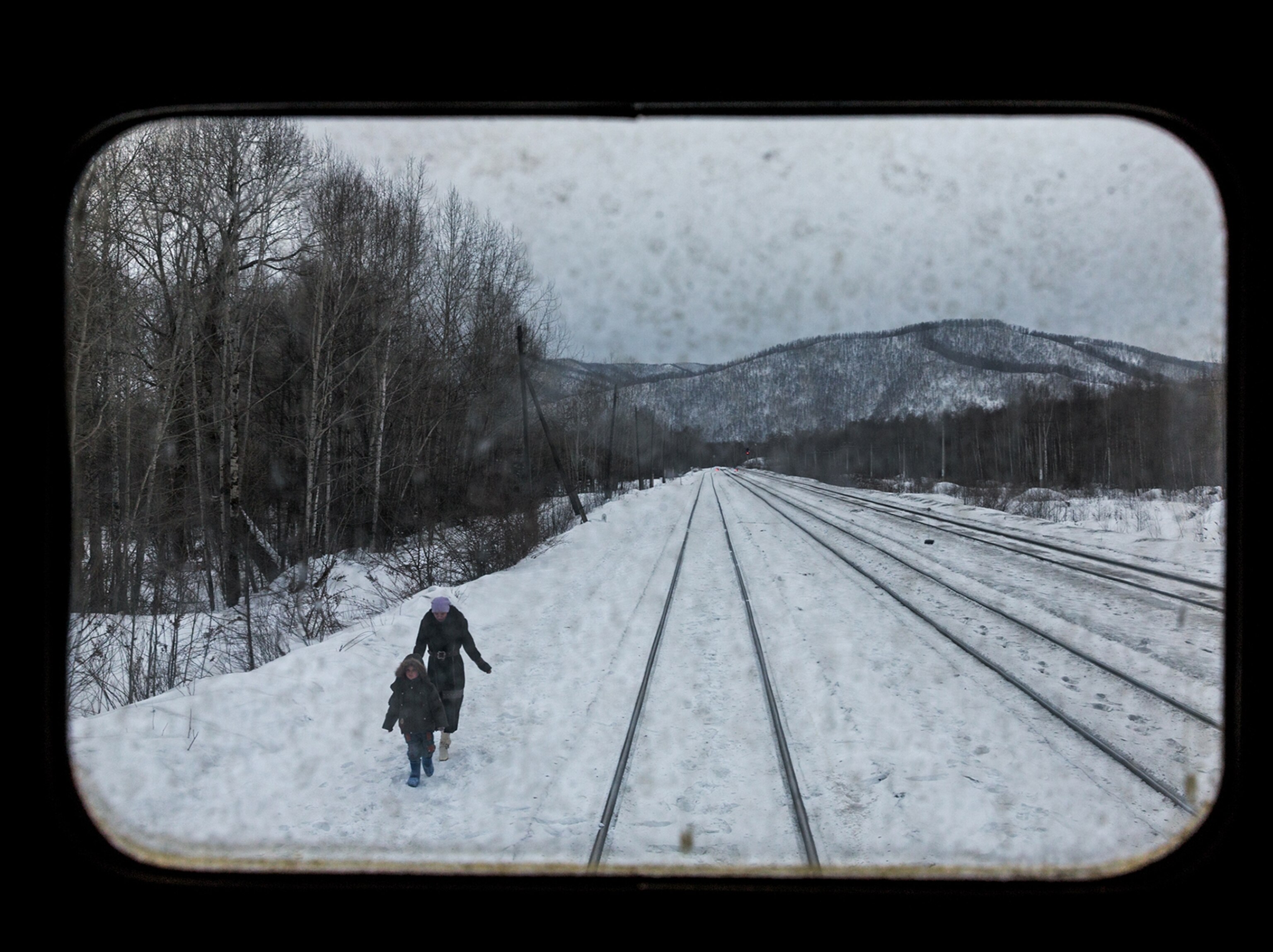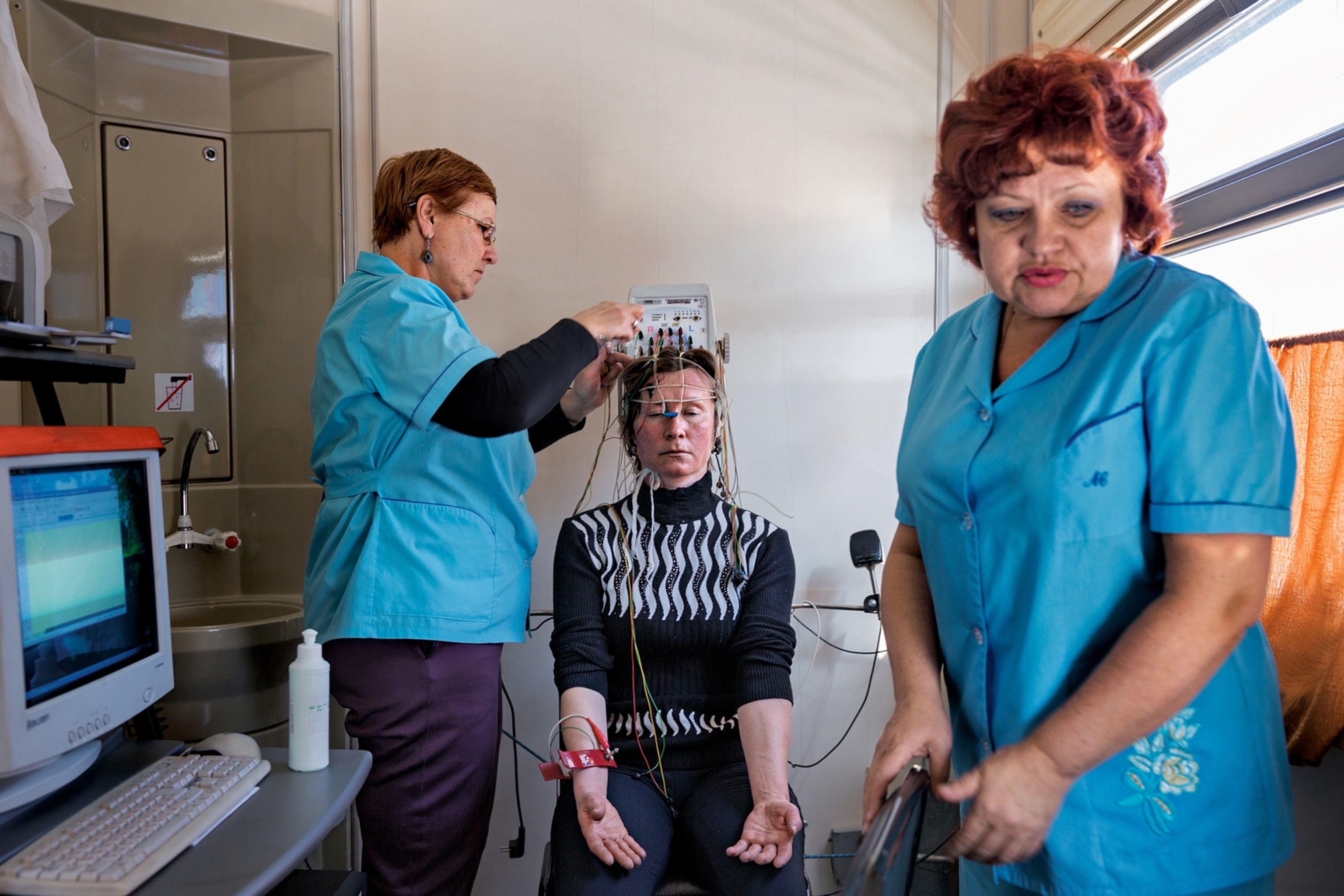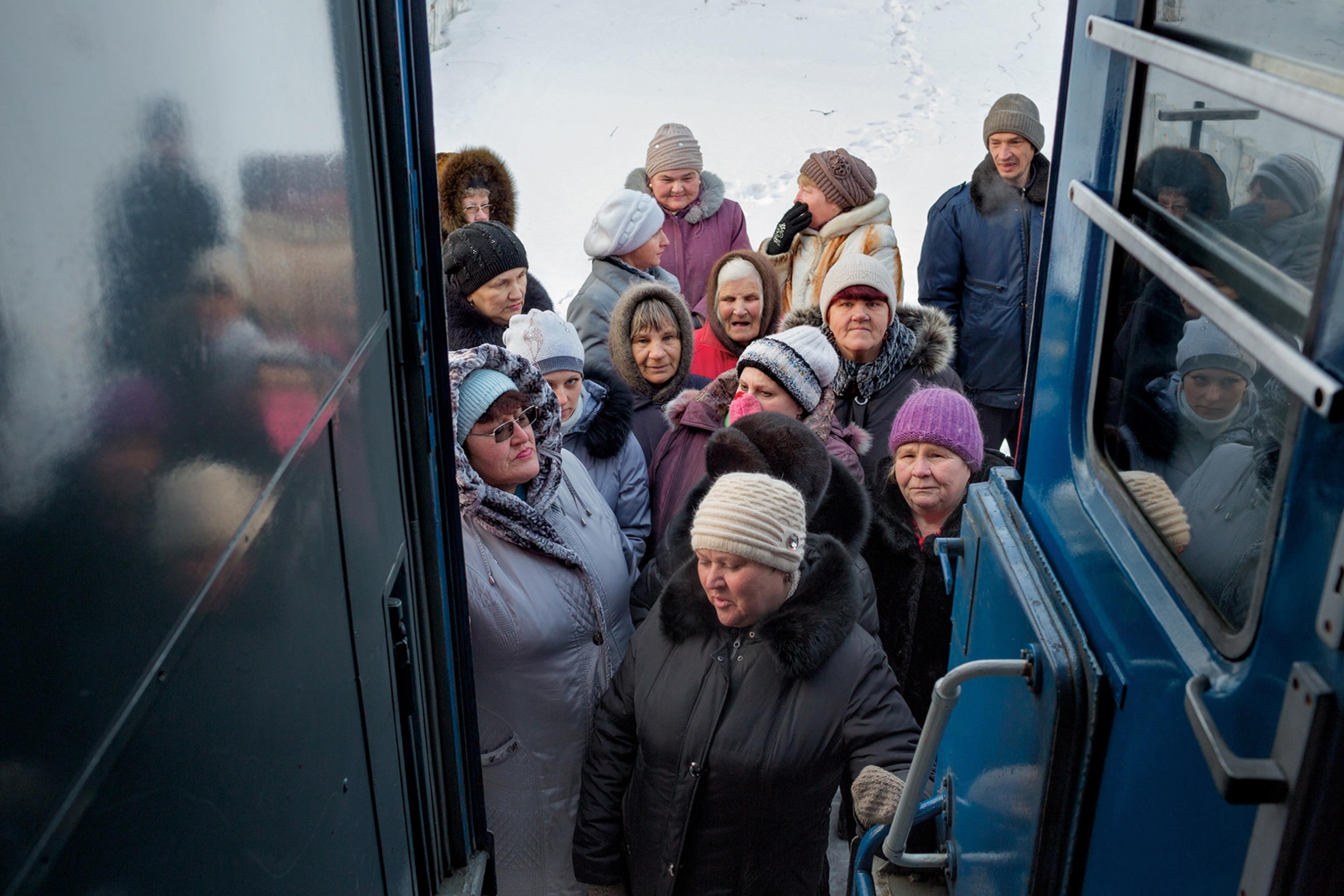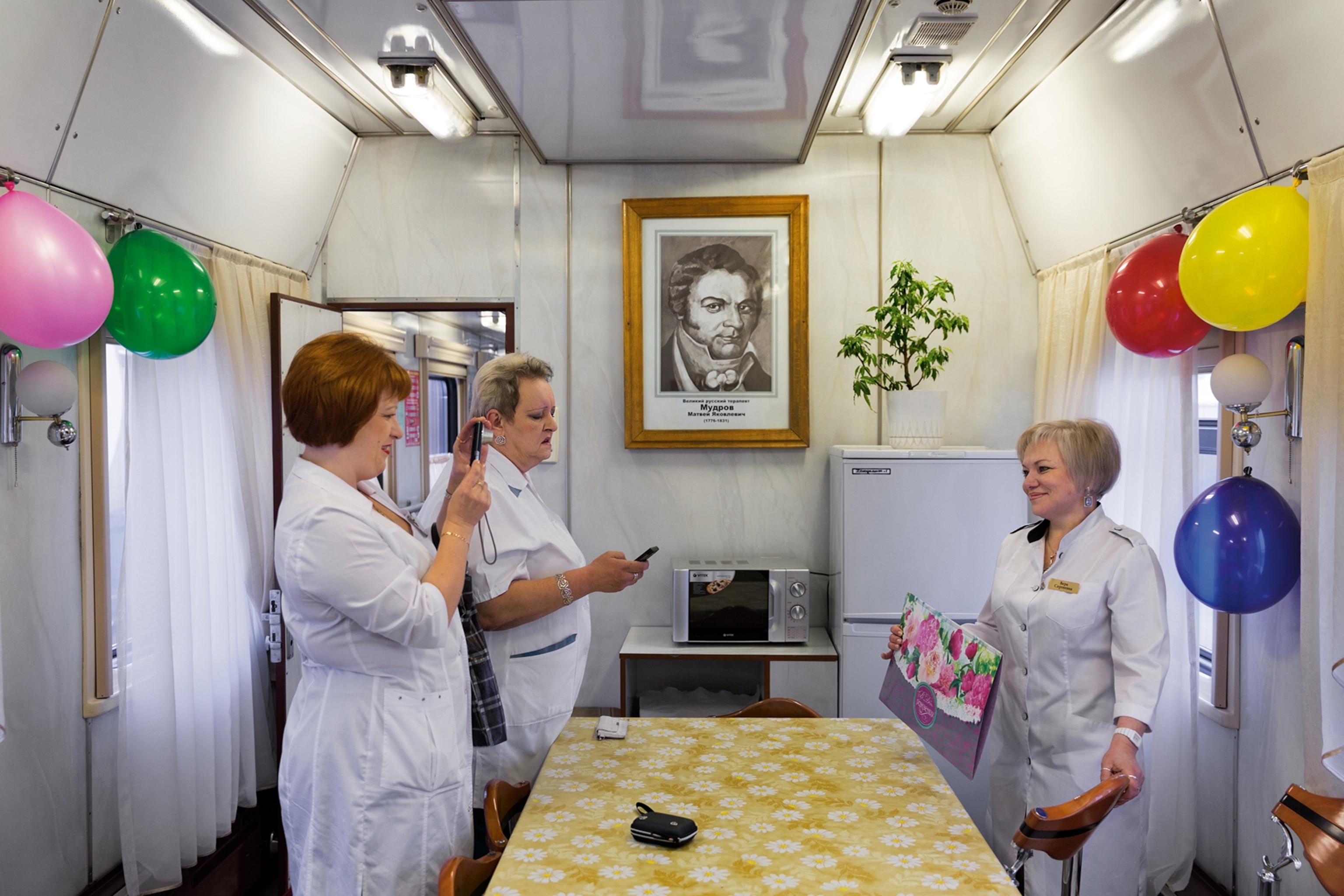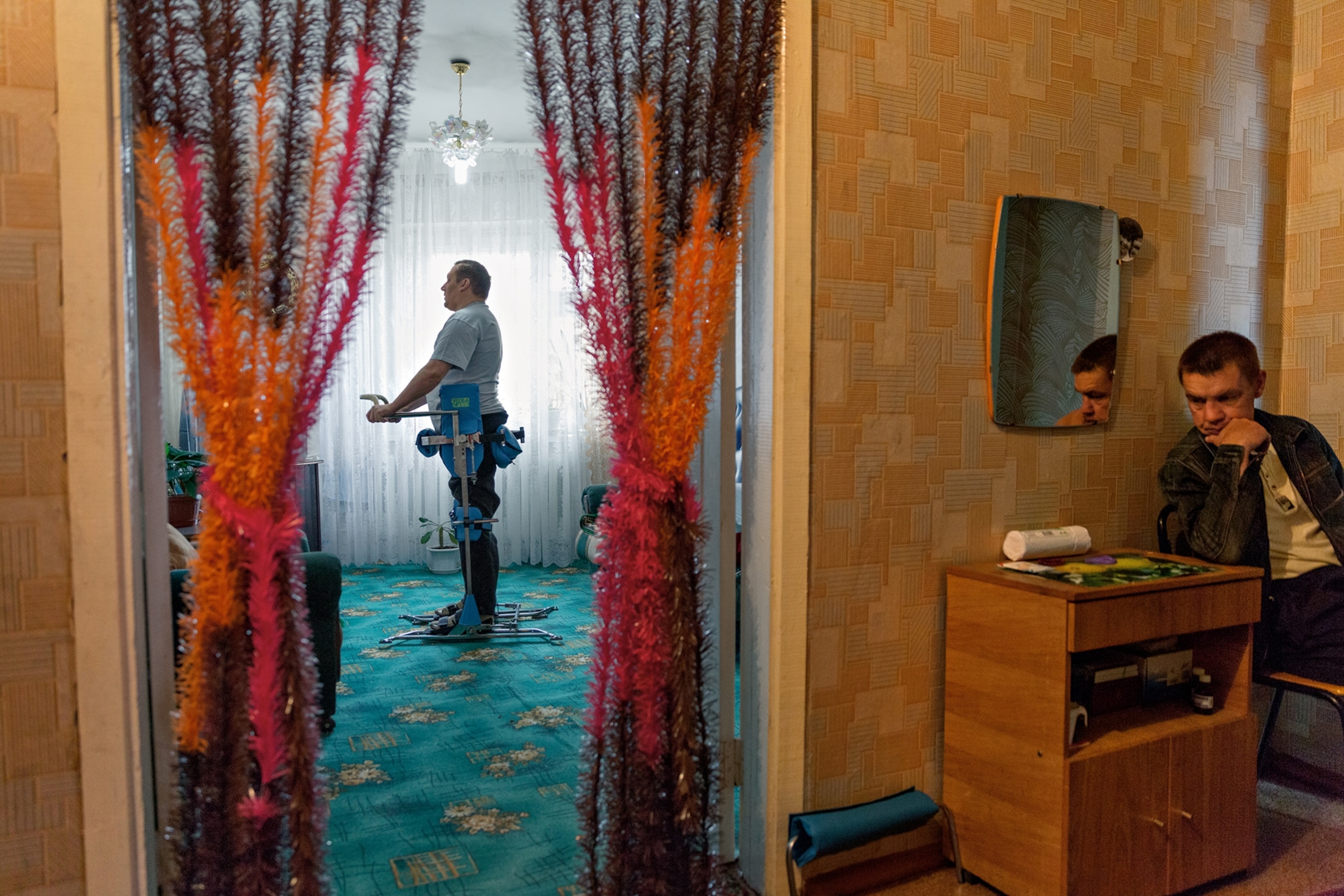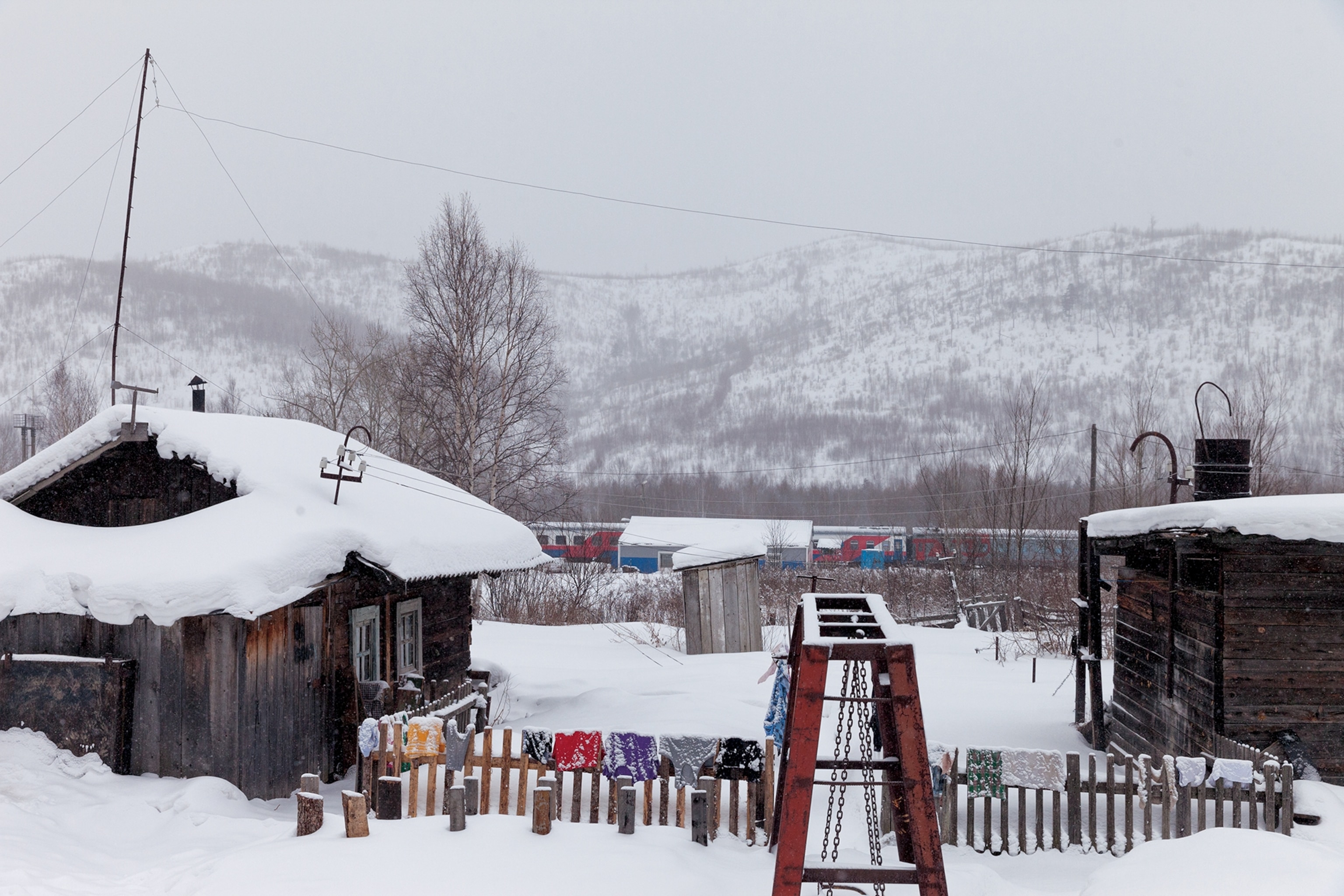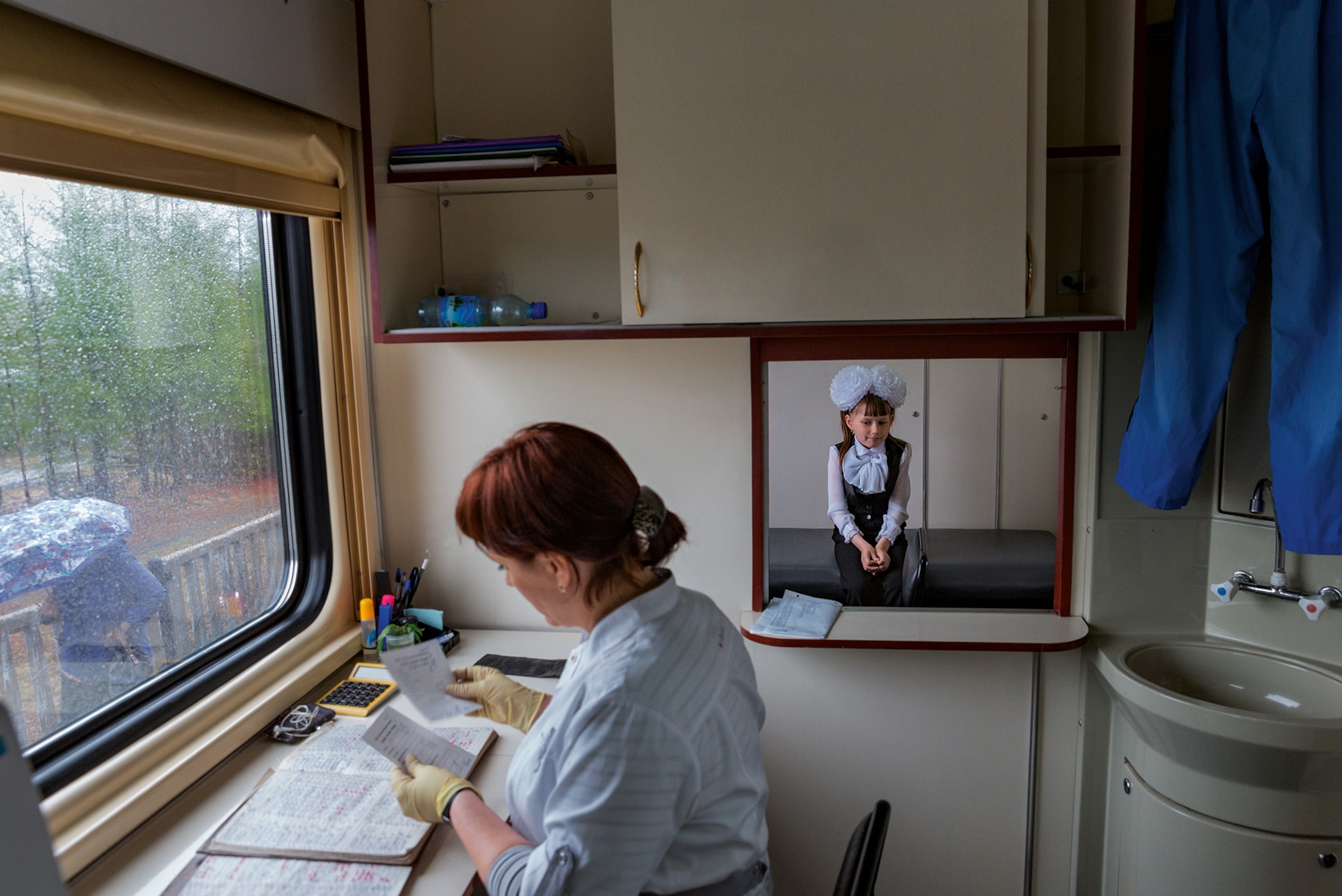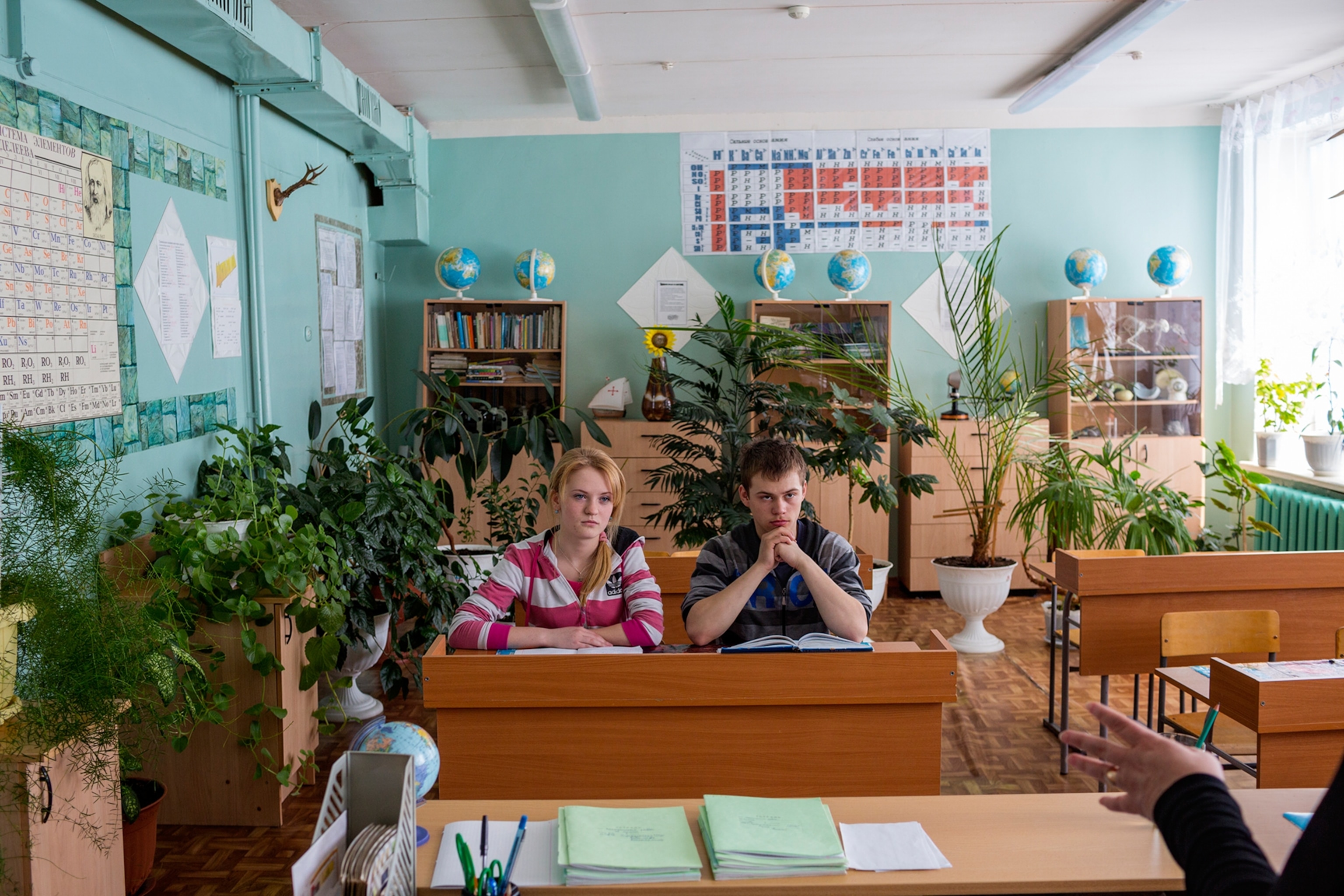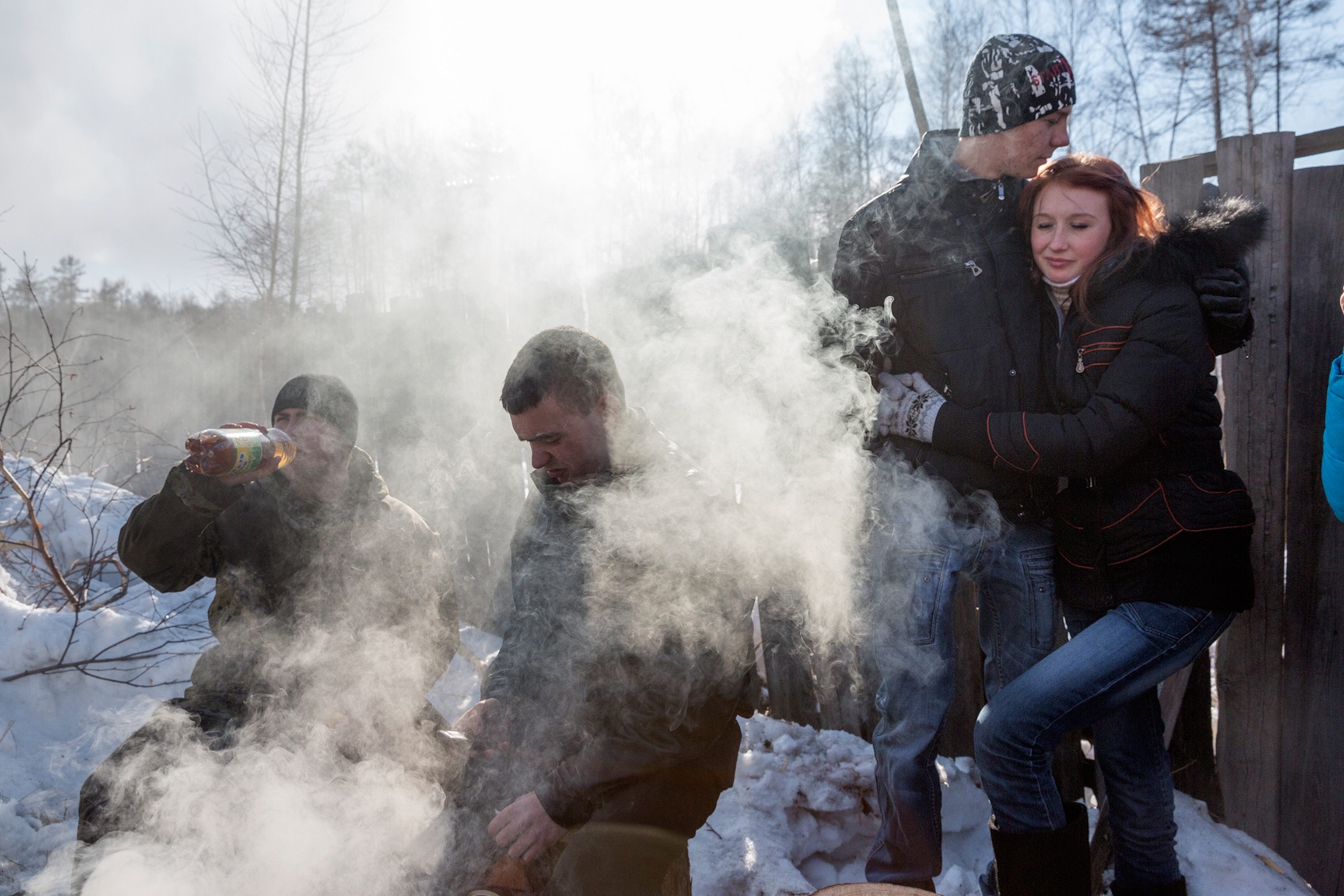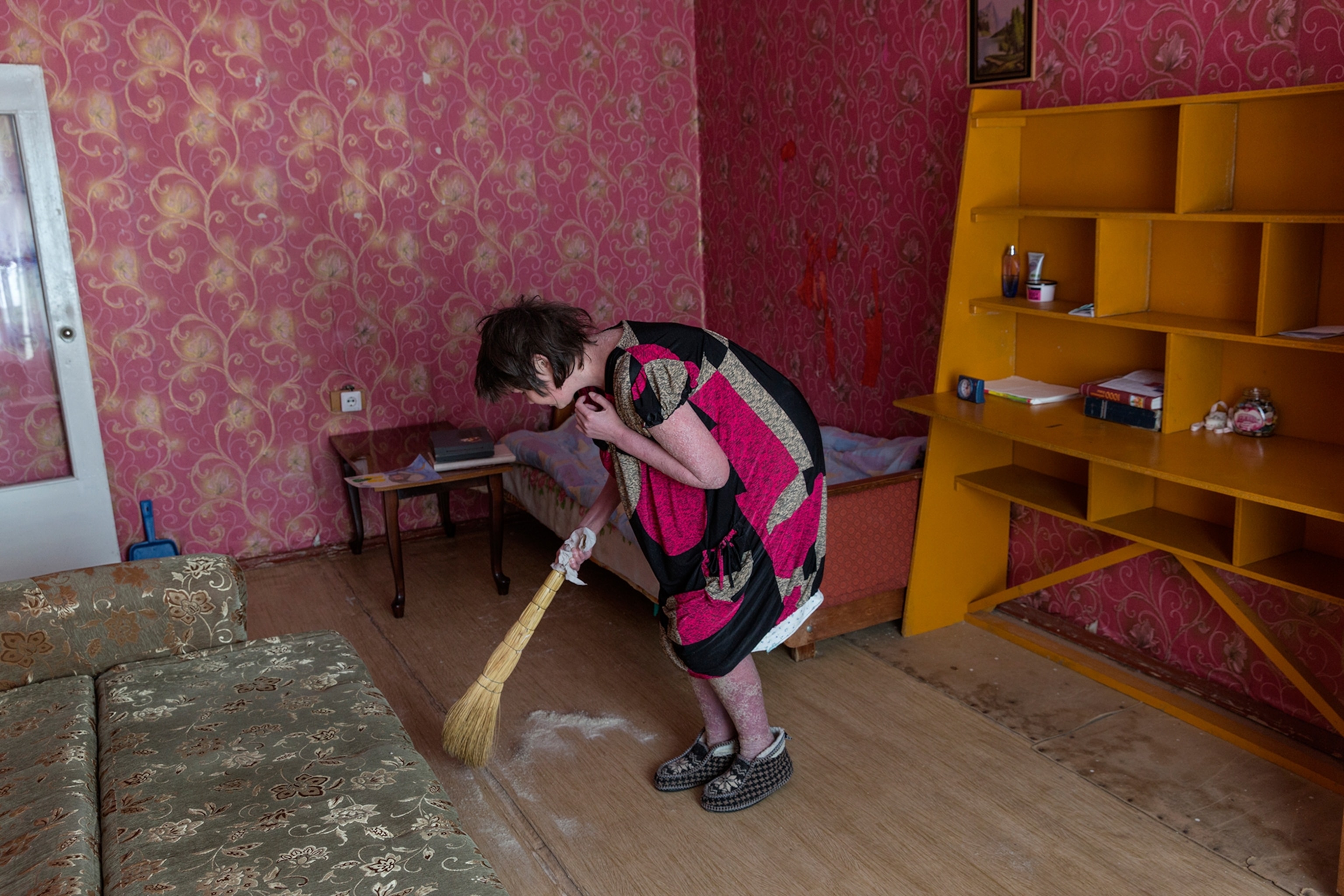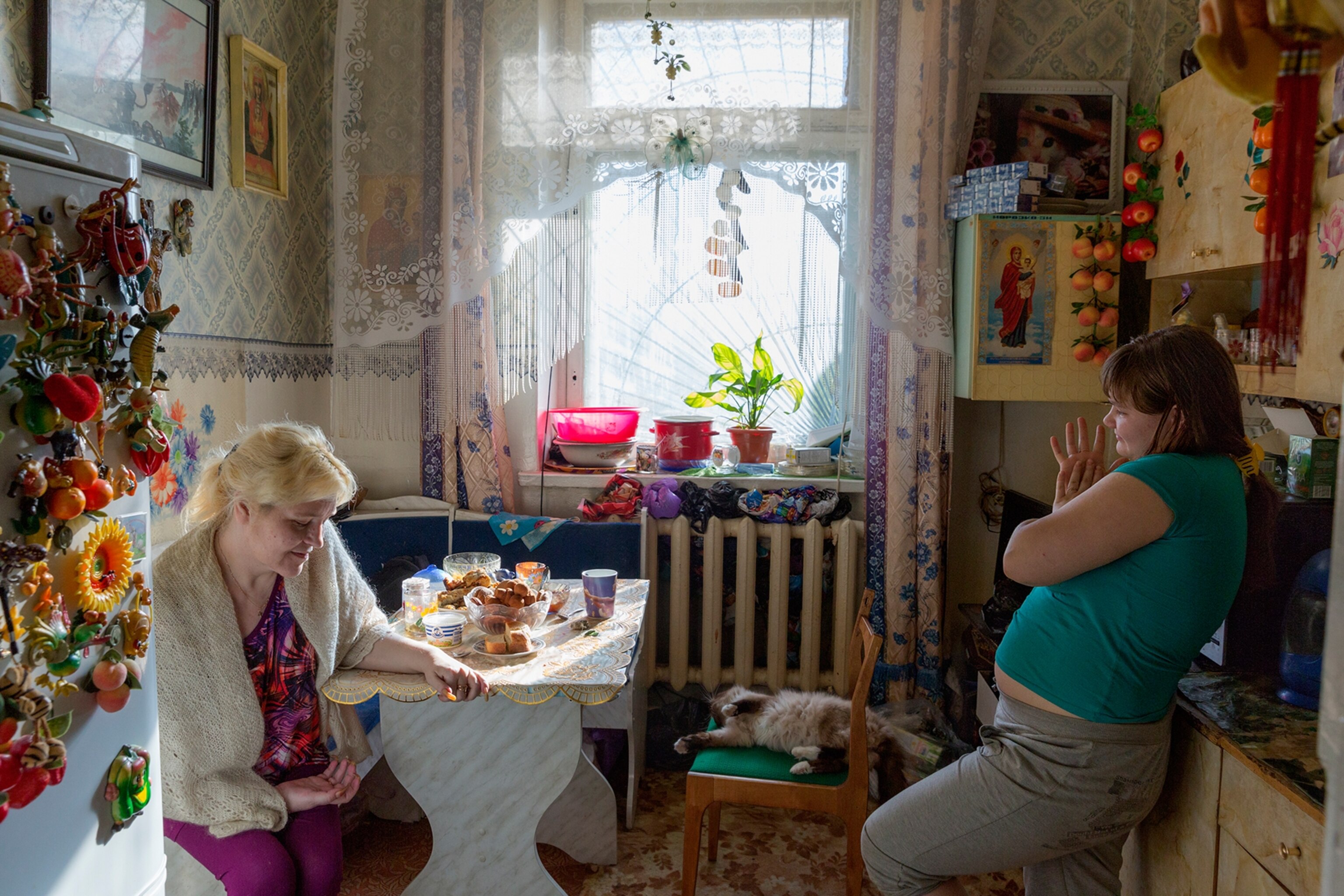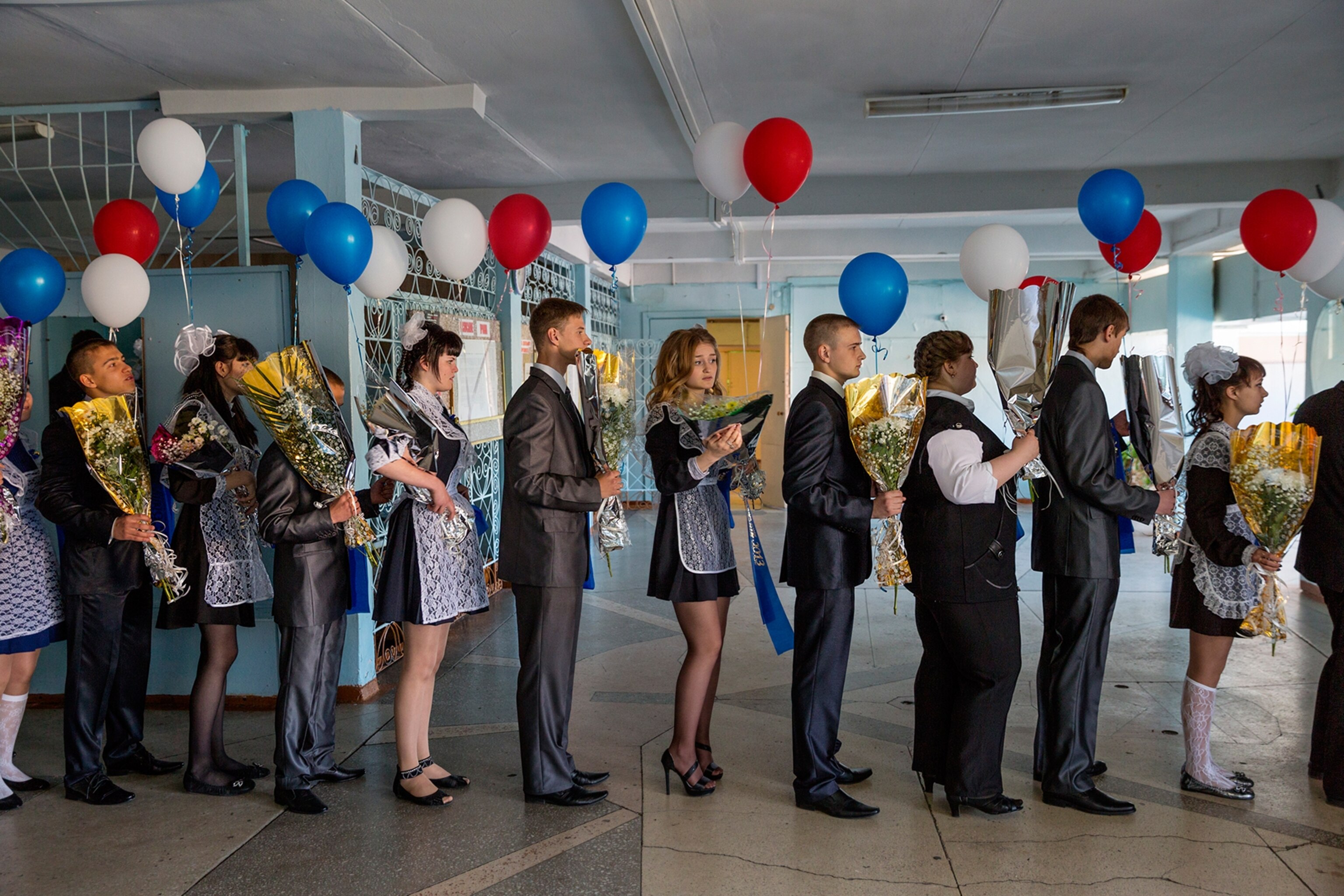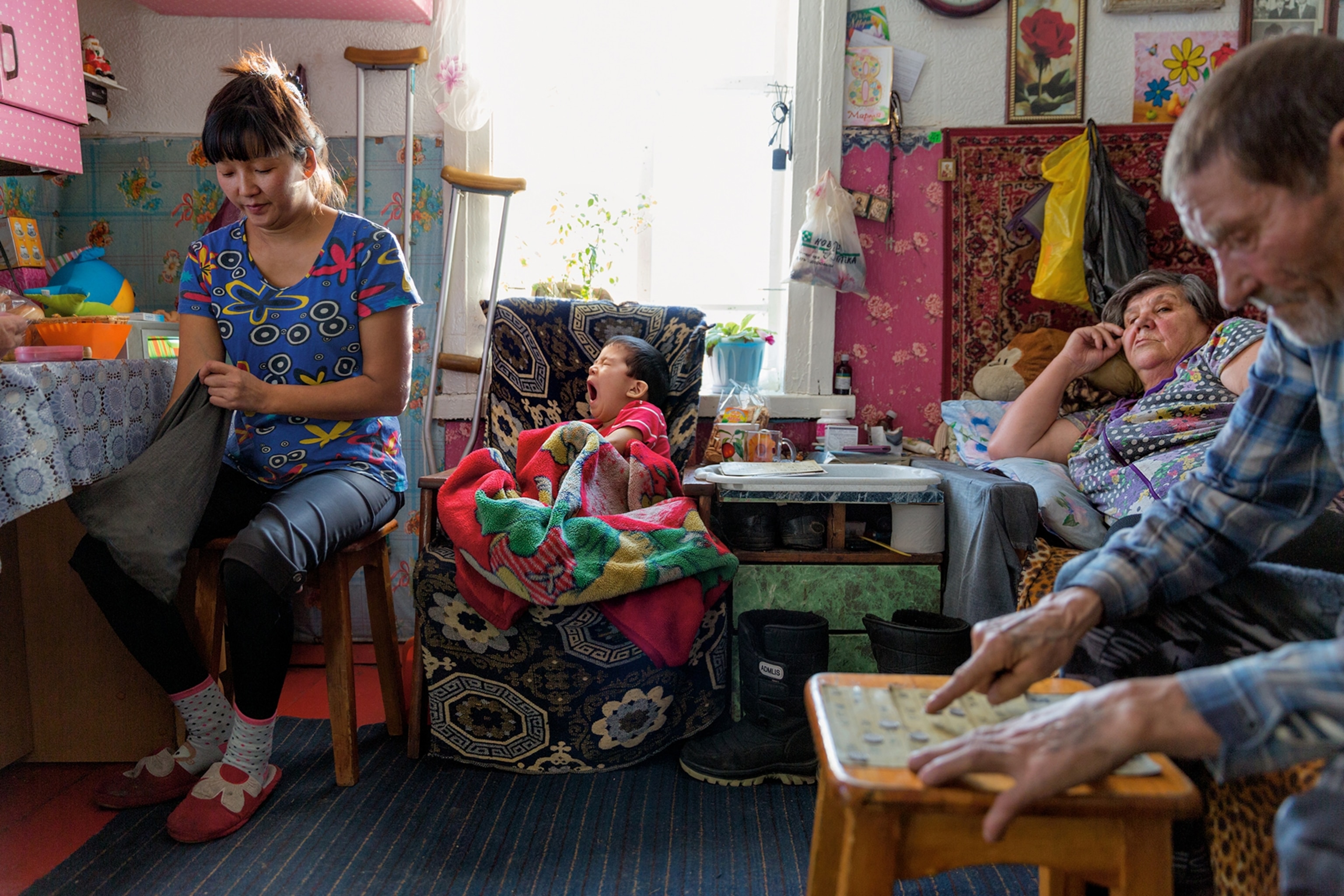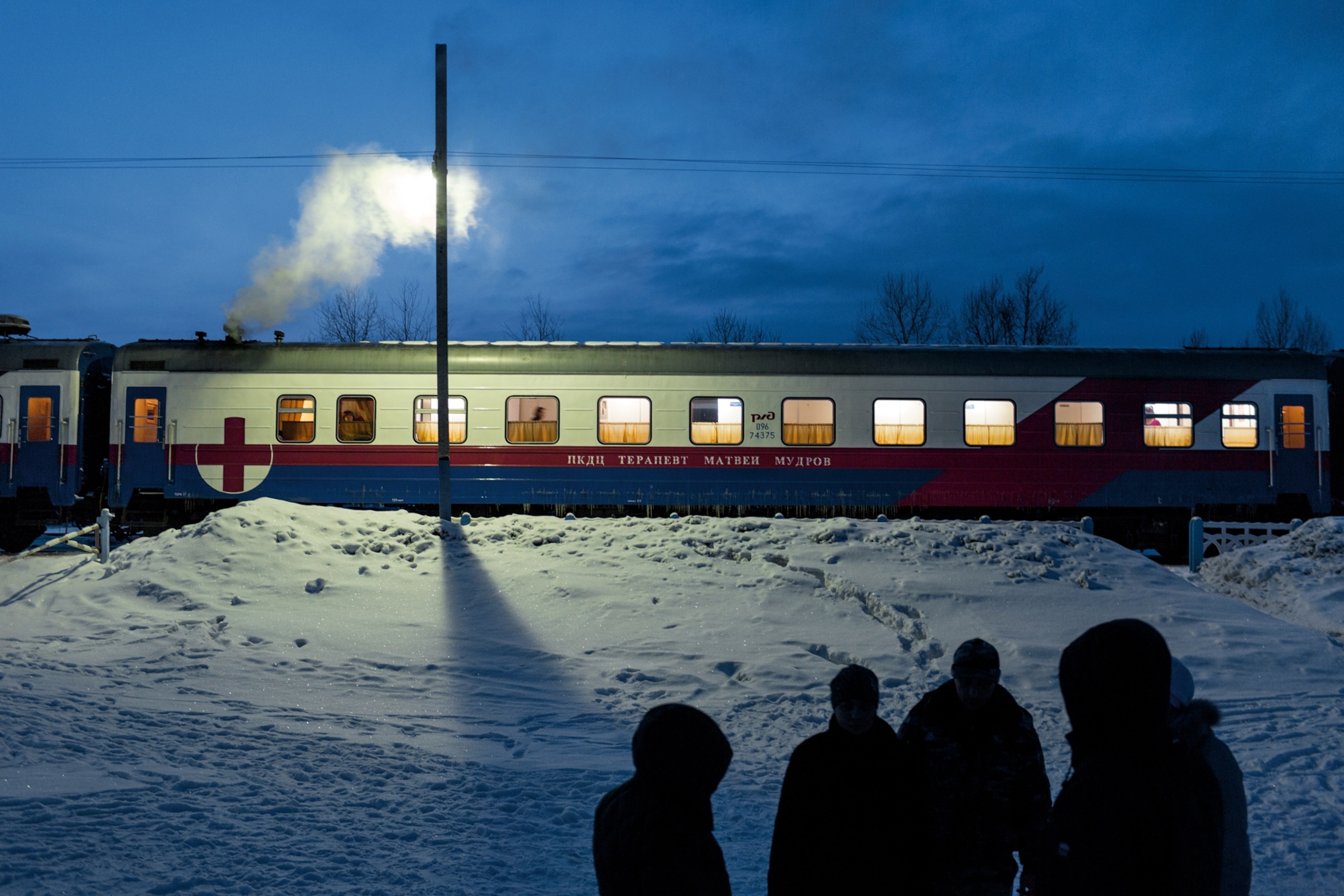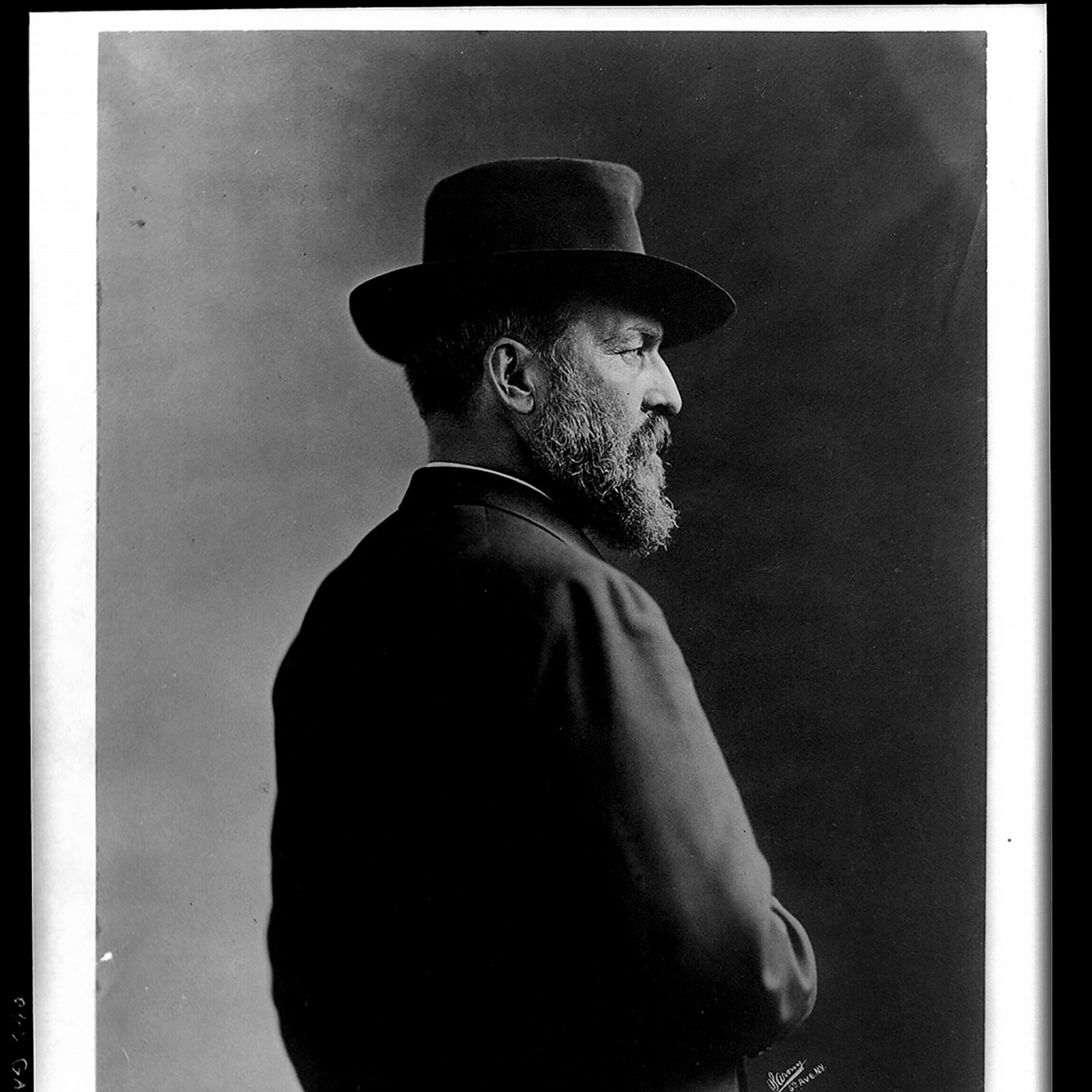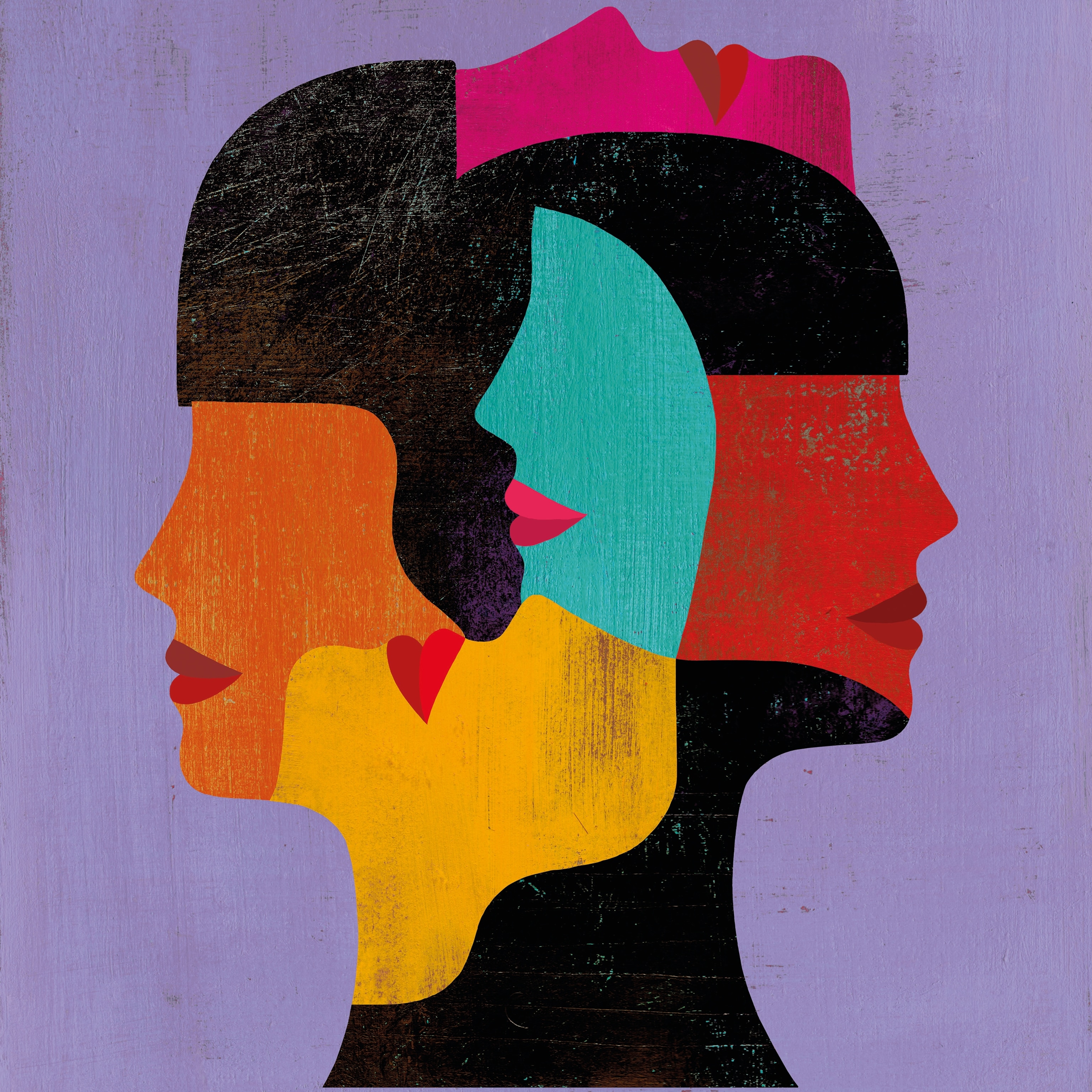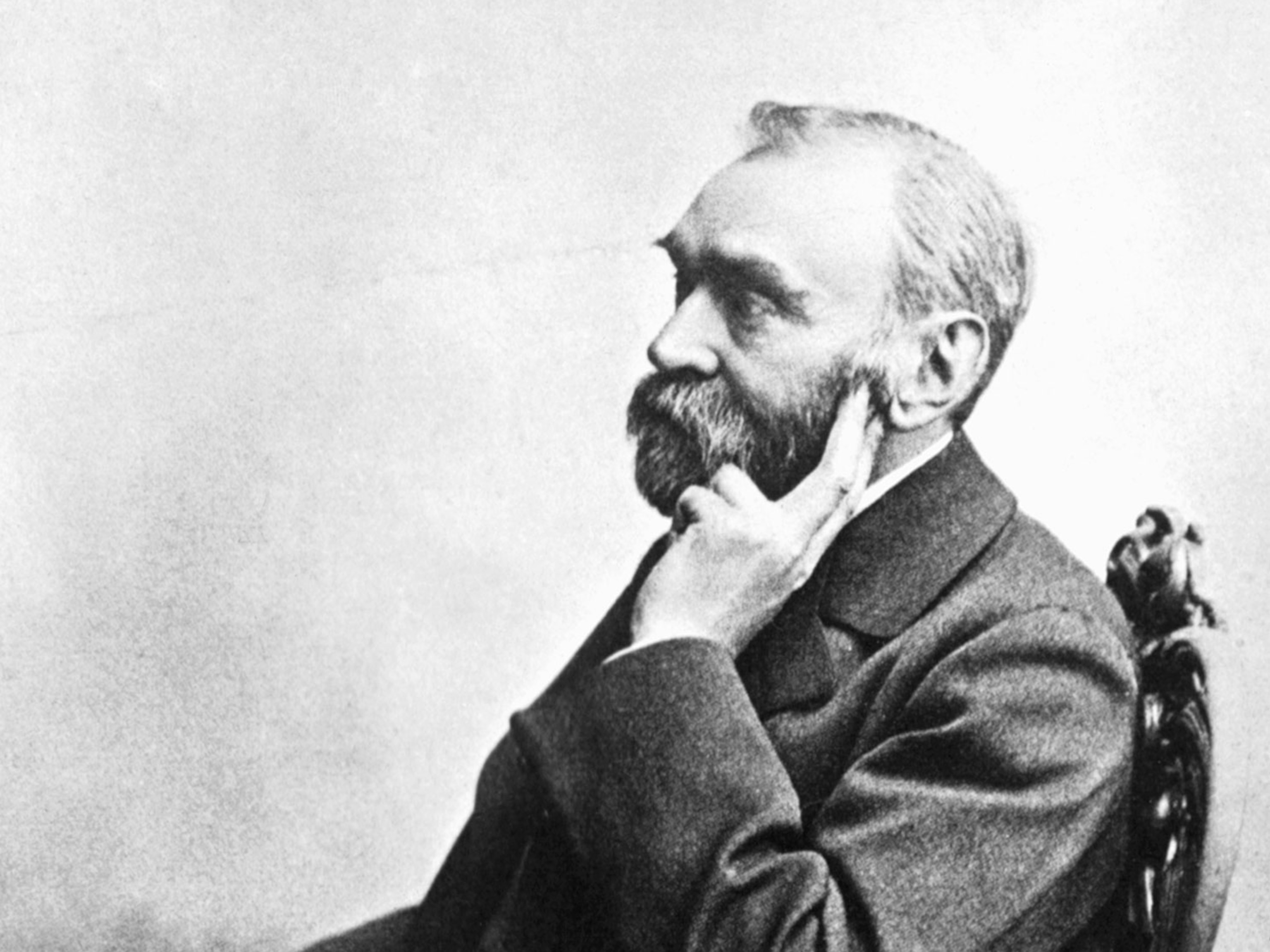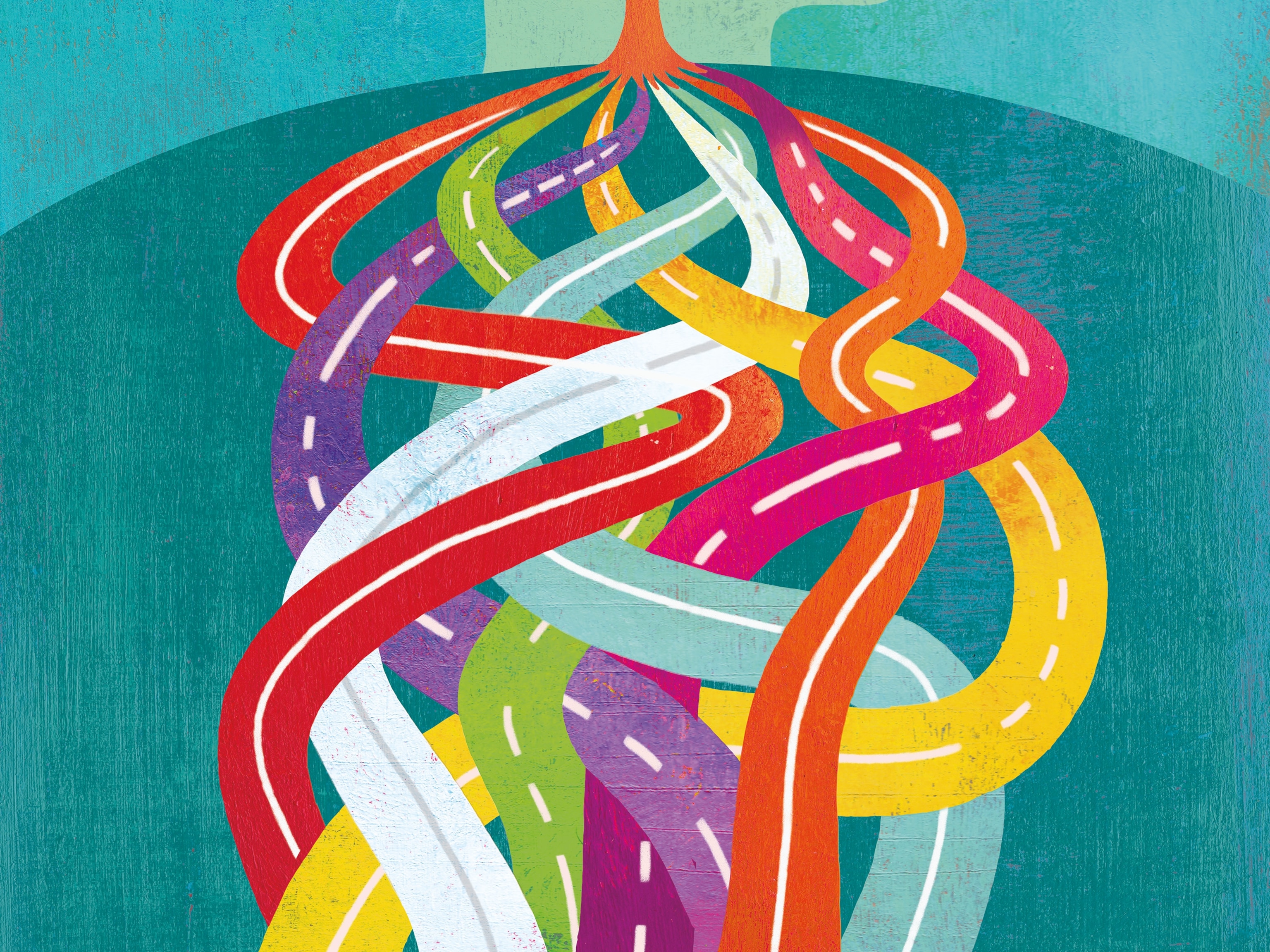Train for the Forgotten
For Siberia’s isolated villagers, the doctor is in the railway car.
The ailing and the injured await the train at every stop. In Khani, a village of 742 people wedged between the snowy peaks of the Stanovoy Mountains, patients emerge from concrete buildings and gather along the tracks. They all seek medical treatment. One man fell down a staircase while drunk and broke both of his ankles. A teacher at the only school in town wants a checkup for her 14-year-old daughter, who came down with appendicitis a month earlier and was, quite luckily, evacuated on a cargo train. She had her appendix removed in Chara, three anguished hours away.
These and other patients are waiting now to board the Matvei Mudrov medical train. This is Khani’s main lifeline—a mobile medical clinic with basic equipment, exam rooms, and 12 to 15 doctors. Run by the Russian state railways agency and named for a 19th-century physician who helped establish clinical practice in Russia, the Matvei Mudrov runs from village to village, stopping for a day to see patients, then continuing along the thousands of miles of track that stretch across the Russian Far East.
Khani is in many ways typical of communities along the rail line: A yard of rough gravel and stone ringed by five-story, prefabricated apartment blocks forms the center of town, which seems largely deserted. The people have no surgeon of their own, no specialists—just a small clinic with Soviet-era equipment and an all-purpose doctor who was educated as a dentist. For many, the Matvei Mudrov is the only expert attention they get.
In the afternoon I take a walk with Khani’s one police officer, Nikolay Kolesnik, who is 29 and has a smooth, boyish complexion and hair so blond it seems almost translucent. He only arrived the previous winter; for the six years before that, the village had no police officer at all. His one pair of boots tore open after a month, and because there are no clothing stores in the village or anywhere nearby, he had to take a train 20 hours back to the regional capital to buy new ones.
These are minor annoyances compared with the impact Khani’s remote location has on Kolesnik’s job. The village has no jail, which means he can’t make arrests for serious crimes. He can’t even enforce drunk-driving laws: He doesn’t have a Breathalyzer, let alone a medical technician to do a legally admissible analysis. There is no morgue or even a doctor qualified to sign a death certificate, which means dead bodies wait in an old brick warehouse by the rail tracks for pathologists to come by train and get them.
Kolesnik nevertheless insists that he enjoys it here. Life is simpler, the people are nicer, and the job has a calm rhythm to it—he likes the locals, and judging by the friendly nods he gets as he walks around town, they like him.
His affection is not widely shared, however. Three days earlier, his girlfriend left town, taking their seven-year-old daughter along with her. “I’m never coming back to this place for the rest of my life,” she told him.
The Matvei Mudrov serves dozens of villages like Khani along the Baikal-Amur Mainline (BAM), so called because it stretches from Lake Baikal to the Amur River. The BAM runs for 2,672 miles, parallel to the better known Trans-Siberian line but 400 miles or so to the north. Built in the late 1970s and early ’80s, it was the last great Soviet construction project—meant, like those before it, to showcase man’s conquest of nature, made possible by feats of Soviet engineering and the will of the Soviet people. The grandeur and messianism of the project were as much the point as the railway itself.
Soviet leader Leonid Brezhnev gave much of the responsibility for building the BAM to the Komsomol, the Communist Party’s youth wing, which imbued the project with a spirit of exuberance. Between 1974 and 1984, 500,000 people were involved in its construction. They were drawn by the romance of sleeping in wooden barracks in the forest and also by salaries up to three times the Soviet average. Many workers were even promised that after three years on the BAM, they would get a voucher for a new car, an almost mythical luxury at the time.
Little did these pioneers know that the end of this heroic experiment was just a few years away. In 1991, when the Soviet Union disappeared, so too did the resources and enthusiasm to promote and maintain the BAM. By the mid-1990s the region had fallen prey to alcoholism, poverty, and isolation. Many people left. Those who stayed have grown old in an unforgiving environment. Winter temperatures often reach 60° below zero F. In a region with few roads suitable for automobiles, the main route in or out is the railroad. The villages along the BAM survive like an archipelago of small, secluded islands carved out of the wilderness. Not surprisingly, access to dependable health care is limited.
The Matvei Mudrov train is not equipped for even lightly invasive procedures, let alone surgery, though its doctors can offer a diagnosis and recommend a course of treatment. But the medical train is one of the few points of contact those along the BAM have with the rest of the country. (Locals refer to other parts of Russia as “on land.”) The train offers them a sign that the rest of Russia knows that they exist, remembers them, and on some level, cares if they live or die.
The town of Berkakit is made up of a few streets and rows of prefabricated apartment blocks, their paint long faded and foundations ever threatening to sink into the damp permafrost. It was built in the mid-1970s as a transport hub for the BAM and was once home to as many as 9,000 people. Now less than half remain. By around nine in the morning, when the doctors on the Matvei Mudrov begin seeing patients, a line has formed along the tracks.
Among those patiently waiting is Mikhail Zdanovich, a 61-year-old man with a wide face sheathed in heavy, pink skin. His right arm with its dislocated shoulder is in a fabric sling: He is waiting his turn for surgery in Khabarovsk, about a thousand miles away. That is months off. He wants to ask the doctors if he should work in the meantime.
Zdanovich tells me he was sent to the BAM in 1976, when he had just finished Soviet military service. At the time Berkakit was a tiny settlement of a hundred or so young people living in hastily built dormitories. “There was one road—well, they called it a road—but it was no road at all,” he says. Life was hard but also simple and charming. The work in freezing weather was tough but made bearable by parties at night with cognac and Soviet-made champagne. At school, children lunched on bread smothered with black caviar; the handful of shops in town carried almost unheard-of treats, like Japanese clothes and Hungarian jam, shipped in at great expense to keep the workers happy. After a year Zdanovich met a woman who worked at the town bakery; she became his wife.
Now he is employed as a repairman at the local depot. Three years ago he threw out his shoulder while pushing a train car into place; his bosses at the state railways agency urged him to go home and rest but not to file a report. He has been living with his painful, largely immovable shoulder ever since, somehow not so bothered by it, or at least not enough to get himself on a train for the long journey to a proper hospital.
Just about the only employment along the BAM is with the railways agency, which maintains the tracks for those living on the BAM, who have no other means of getting around. It’s a closed system, and in this way and others, life feels much as it did in the waning years of the Soviet Union.
Moscow’s furious, oil-fueled construction boom means nothing here. No new shopping centers or apartment towers or movie theaters have appeared over the past 20 years. But while the benefits promised by free-market capitalism have not arrived, many of the privileges offered by the Soviet system, like subsidized vacations to the Black Sea, have disappeared. As Zdanovich says, using a common Russian expression, “Now we’re not needed for horseradish by anybody.”
As soon as Zdanovich walks into the office of Yelena Miroshnichenko, the train’s general surgeon, she cries out, “Oh Mikhail Pavlovich, I knew I recognized that voice!” He takes his limp arm out of its sling and has her feel his shoulder. His bosses were supposed to reassign him to technical work, but they still give him tough physical jobs at the rail yard. “I can’t work, but that’s no interest to them,” he says. He asks Miroshnichenko if he needs to pay a bit extra to move up in line for surgery. She says probably not but writes a letter saying he is unfit for labor in the meantime. He walks out happy and returns a few minutes later with freshly baked cabbage pies and a glass jar of goat milk. “Take them,” he insists. After years of treating patients in the small villages of the BAM, Miroshnichenko says, “You don’t just know people, you know the dogs.”
The next day the train stops to see patients in Zolotinka, a village of half-empty apartment blocks built on a hill. Since the ticket office at the train station closed in 2012, Zolotinka has become even more cut off. Now residents wanting to travel on the BAM have to drive 45 miles on an unpaved road to Neryungri to buy tickets. It’s complicated to go just about anywhere, so people tend not to. As a crowd gathers and people start to vent their frustrations about traveling, one man leans over to me and says, “If the Soviet Union had been able to hang on another two years, we’d have asphalt all the way to Neryungri!”
A few cars down, near the train’s laboratory, I come across a young girl with a pink jacket and a long blond braid, pacing the corridor, waiting for her mother. Her name is Anya, and she is in the seventh grade—one of two children in her class. “It’s just me and Andrei, and he’s a jerk, I’ll tell you that right away,” she says. Anya tells me she likes big cities, though the largest she’s ever been to is Blagoveshchensk, a regional hub of 200,000 people on the border with China. “I’ve already told my mom, as soon as I finish school, I’m moving to Moscow,” she says. As she imagines it, the capital is a city of “big, open squares, with lots of places to take photos, and towers with clocks on them.” Maybe, though, she wants to live in London, where “they have a big tower with a clock too.”
Later that afternoon I run into Anya and a few of her friends at the playground that is their one source of entertainment in Zolotinka, and I walk with them up the hill toward an abandoned white-brick barracks. They climb up the rotted staircases and jump over shards of glass, playing a shrieking, whirling game of hide-and-seek. After a few minutes a woman in her 60s runs up, scolding the children and yelling at me, or at no one in particular, perhaps just wanting to amuse herself with the scandal she has created. The kids go home and I walk back to the train.
After a week on the Matvei Mudrov, life settles into a rhythm that is soothing in its repetition: the green pines of the surrounding forest, the guttural rumble of the train’s engine, the hypnotic clop clop clop of the tracks below. The cook, a 27-year-old jokester named Vitya, serves three meals a day; I find myself waking up hungry for his doughy, fried blini with jam, which the doctors eat standing up behind the laminate counters in the dining car. They amuse one another with tales of patients, like the babushkas who come in wanting ultrasounds of everything because they heard of the procedure on a medical TV show starring Dr. Agapkin.
The train visits each village along the BAM roughly twice a year. Its main powers are diagnostic: It has a lab for blood and urine analysis, EKG and EEG monitors, an ultrasound, and an x-ray machine. Doctors write out courses of treatment and recommended drugs—but just as often, offer reassurance and basic instruction, like the admonition that instant coffee alone doesn’t provide enough hydration to prevent kidney stones. I hear many patients praise the medical staff for their honesty and competency. Doctors along the BAM, I am told, often have long lines slowed by bureaucratic formalities or try to funnel people to their after-hours, cash-only practices.
Consultations happen mostly on the train, but every now and then the doctors make a house call. One day in Lopcha I get into an old jeep with Dr. Miroshnichenko to drive down the village’s one muddy, potholed road. We arrive at an apartment block made of concrete slab that looks exactly like every other apartment block I have seen on the BAM. We climb a dark stairwell, stopping outside a door on the third floor. A woman named Vera Popova opens it. Popova, who is 67, came to the BAM in 1980 with her husband, a welder for the railways who died three years ago of a heart attack.
She leads us to the back bedroom, where we meet her 45-year-old son, Albert. Early one morning in 2007, Albert was walking along a crossbeam of an abandoned apartment building when he slipped on an invisible slick of ice. He fell six feet to the cold, wet earth. “I had the sensation like my whole body was in jelly,” he tells me. He lay there until some friends came; they carried him by his hands and feet to wait for a train headed in the direction of a hospital around five hours away. He was paralyzed from the waist down. Doctors sent him home, and the state gave him a certificate pronouncing him a medical invalid. It wasn’t so much “a diagnosis, but a sentence,” he thought.
Now he passes his time watching documentaries and getting into fights about history, politics, and psychology in Internet chat rooms. His mom washes him and massages his back and legs. He is unable to use the toilet, so he lies on his back in diapers that his mother changes a few times a day.
Some hope came when an old friend told him about an advanced rehabilitation facility in Krasnoyarsk, a large city farther west in Siberia. Doctors there showed him exercises to rebuild strength and, one day, possibly regain the ability to walk. But the last time he was there he injured his knee. He hasn’t gotten up from bed since. He could see a doctor in Tynda, five hours away by train, but for that he would have to ask friends to carry him to the station and then endure an uncomfortable ride propped up on a stiff bench, and he just doesn’t have the energy for it anymore. That’s why he and his mother asked the doctors from the train to come have a look.
They want to know if his knee has healed and whether he can resume a light rehab program at home. Miroshnichenko pokes around, lifting his leg and testing his reflexes. “You can stand, put weight on it—go ahead,” she says. Albert’s mom brightens at hearing that he can resume exercises. She clasps her hands together, then goes to embrace Miroshnichenko. “Good God, thank you, thank you,” she says, shoving a paper bag with two smoked fish into her arms.
The villages along the BAM were built by work brigades from various corners of the Soviet Union: the Ural Mountains, Georgia, St. Petersburg, elsewhere. The village of Larba was built by laborers from Soviet Turkmenistan. Only one is left: Abdikerim Mukhamedmazorovich, a lanky 49-year-old with a thin, silver mustache, who takes me to see the cemetery. “We have one illness here,” Abdikerim says, clicking his index finger against his neck, the Russian symbol for drunkenness. “You see, Ast drank and drank. Tuyev, he also got burned by spirits. Sergei was drinking, got hit by a train. This one, he never cured his hangover. Liliya got all the way hammered. Netukhov drank and drank, and drowned in the river.” Later Abdikerim alludes to how his wife has her own problems with alcohol. He then quickly changes the subject: He wants to show me the land above the river where Soviet generals once had their dachas.
The last stop on this Mudrov trip is Kuvykta. The morning is gray and rainy, and pools of water form on the dirt path in front of the train. By this point in the trip, more than three weeks after the train first left Khabarovsk, the doctors are tired, a little less quick to crack a joke. I stop by the room of Alexander Komarov, the train’s neurologist. In the mid-1980s, before he became a doctor, Komarov came to Kuvykta as part of a Komsomol brigade sent to work on the BAM. “I haven’t been back in 30 years,” he tells me.
We decide to go for a walk around the village. Komarov was 22 years old when he first came here, a medical student just out of the Soviet Army. “They asked us, ‘Don’t you want to repay your debt to your motherland and go work on the BAM?’ ” Why not? he thought. “The whole country was building railway tracks, stations, villages,” and he wanted “to offer something of my own.” Everyone lived in a temporary settlement on a patch of dry earth by the river. “There were hills all around, quiet, no people … the end of the Earth.” There was a romanticism in the roughness of BAM life: He would wake up at 6 a.m., walk out of his tent to brush his teeth in the river, have breakfast with the other young BAM laborers, then spend the day doing construction work, cracking jokes, and tanning in the summer sun. At night the group would light a fire and play guitars.
Komarov can no longer remember where exactly the camp was located. A heating plant of red brick and metal sits rusted and unused. “It hurts that all this labor was in vain,” he says. “We tried, really strived to achieve something, and it turns out that today our work isn’t needed by anybody.” We slog through the mud, following a path that takes us to the riverbank. Komarov picks up a handful of small stones, rubbing the wet earth in his fingers, trying to conjure up a memory of where he lived and worked and slept and sang so many years ago. It was around here, he says. Or maybe not. We stand for a few minutes, not saying much, looking at the slow current of the river and feeling our shoes squish into the mud, then turn around and walk back toward the train.
